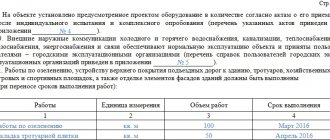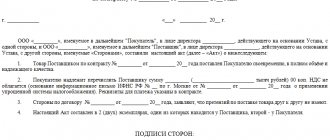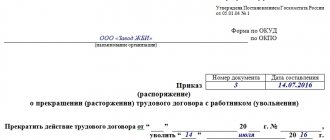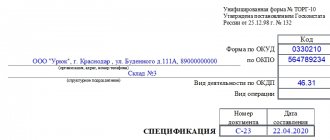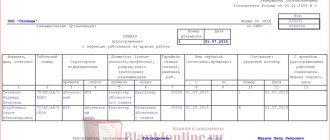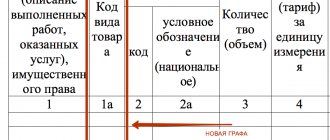Upon completion of construction of a facility, its readiness for operation is confirmed by the acceptance committee, which is documented in a special document - an acceptance certificate in the KS-14 form (we will provide a sample at the end of the article ). This is a unified form approved by the State Statistics Committee (Resolution No. 71a dated October 30, 1997). The organization has the right to use a unified form (KS-14) or develop the document form independently. It should be taken into account that in any case, the primary documents used by the organization must include the mandatory details specified in Part 2 of Art. 9 of the Law “On Accounting” No. 402-FZ dated December 6, 2011.
Hat KS-14
The first part of the KS-14 act includes the following information:
- date and number of drawing up the acceptance certificate of the completed construction project by the acceptance committee;
- name of the contractor organization according to the constituent documents indicating the OKPO code (from the registration papers of the organization);
- address of the construction site being accepted (city, street, house/building);
- the enterprise that appointed the commission for acceptance of the construction project;
- date and number of the administrative document (order) approved by the acceptance committee.
How the act is drawn up
Form KS-14 is filled out by the contractor in such a number of copies that there are enough copies for all parties to the transaction: the customer, the investor, the contractor, and representatives of the acceptance committee. In this case, the composition of this commission is agreed upon by the customer of the contract work or the investor.
If you study the sample KS-14 (it can be seen below), it will become clear that the form includes real prices for work that were in effect in the current year.
Relevant documents must be attached to the KS-14. Their list is given in the Temporary Regulations, which are not currently in force, recommended by the letter of Rosgosstroy dated 07/09/1993 No. BE-19/11-13. After the cancellation of this provision (letter of Rosgosstroy dated October 31, 2001 No. SK-5969/9), the list of necessary documents that are attached to KS-14 is approved by the parties in the contract agreement based on the norms of the current legislation and building codes.
Filling out data in KS-14
The following are the conditions for signing the act, namely:
Column 1. The full name of the construction project on which the contractor worked, indicating its address (city, street, house/building), is entered here.
Column 2. This includes the name of the government agency that issued the construction permit.
Column 3. This line contains information about subcontractors, that is, companies that also took part in construction work. If there are none, then this line can be skipped.
Column 4. Here you must enter the full name of the company - the general designer who developed the design and estimate documentation for the construction of this completed facility, indicating its address. Also, if any, other organizations that participated in the development of this documentation. If there are no such organizations, it should be noted that all design and estimate documentation was created entirely by one company.
Column 5. Provides a link to the document on the basis of which the initial design data was issued.
Column 6. This line includes information about the company that approved the design and estimate organization (as a rule, this is the construction customer, but sometimes an investor or other interested structure), as well as the approval date and document number.
Column 7. The period of construction and installation work is entered in these cells, indicating clear dates for the start and end of construction (month and year only).
Main purpose
The type and purpose of the building does not matter - the form takes on residential buildings, office centers, industrial premises and other real estate. In a legal sense, signing the act means that the receiving party has no claims against the developer.
Thus, the document performs 4 functions:
- Confirms the fact of acceptance of the object.
- Serves as the main evidence that the receiving party has no complaints about the quality of the developer’s work.
- Serves as the basis for further inclusion of the finished object in fixed assets.
- Reflects information about the cost of the object, which was initially provided for in the project (in the estimate), as well as the actual cost (accepted fixed assets).
Form KS-14 is drawn up in several original copies, which have the same legal force. The number of copies depends on the number of interested parties:
- Customer of the work.
- Investor.
- Contractor (developer).
- Representative of the commission for acceptance of the object.
Thus, the act not only reflects the very fact of acceptance of the object, but also serves as a legal basis for the final transfer of funds from the customer (and other interested parties) in favor of the contractor (construction company) for all construction work performed.
The need to sign the act is specified in the Civil Code (Article 753). It is the signing of the document that gives rise to the fact that the customer is obligated to make all payments in favor of the developer.
Filling out the table on the second page
The eighth column of the acceptance certificate includes two tables. The first of them contains six columns and applies to any construction projects, except residential buildings.
Column 1. Here you need to enter the name of the main indicator of the construction project (power, capacity, throughput, number of jobs, productivity, length, volume, etc.);
Column 2. The unit of measurement of the previous indicator is indicated here (cubic meters, square meters, etc.);
Columns 3-6. These columns contain information about how many total units of measurement for each previously specified indicator this object includes (according to the project and actually).
Table Option B is filled in only when the construction site is a residential building. It has four columns, which also contain indicators and units of measurement (according to the project and actually).
Reception and delivery of completed work
Upon completion of construction, the developer provides the company with a work completion certificate - KS-11. You may also need form number 14. These are two different documents; their differences will be discussed later. The completion of construction is confirmed by the transfer of a package of documents from the contractor to the customer.
Under a construction contract, the contractor assumes the responsibility to construct a building or carry out repairs within the specified time frame. The customer takes on the burden of creating the necessary conditions for this, and then pays for the work. Also, according to the Civil Code, as soon as the contractor reports the completion of work, the company must accept it as quickly as possible, without delay. The results are accepted either at the very end of the work, or in stages - this is fixed in the contract.
The results of the work and its acceptance end with the signing of the acceptance certificate KS-11. There are also situations when one of the parties refuses to sign. This is noted directly in the document, and only one party signs it. In such a situation, a trial is then held. If the reasons were serious, then the act is declared invalid. But if both sides signed COP-11, then it will be very difficult to prove that they are right.
In general, most often the customer refuses to sign if he sees that the object does not meet technical or other standards. Expert advice says that the stages of work are more difficult to accept than the overall result. After all, if at some point you give the green light for further actions, then the entire construction may go wrong, and it is the customer who will be responsible for the failure of the building and the death of people.
Filling out the third page
Column 9. Here you should refer to the application (i.e. indicate its number), which contains information about acts of acceptance of equipment installed at the facility;
Column 10. There should be a link to the application, which indicates acceptance certificates, certificates, etc. documents on communications included in the construction project.
Column 11. This small table contains information about all other work carried out on landscaping, improvement of roads, sidewalks, construction of sports, play, and utility buildings related to the main object of the completed construction (with a clear indication of the units of measurement, volume and deadline for completion of the work).
Columns 12-13. Here the numbers indicate the final cost of the construction project according to the design estimates, dividing the amount into the cost of construction and installation work performed and the cost of equipment, tools and inventory.
Column 14. Here is a reference to the number of the application, which contains a complete list of documentation that is an integral part of this act, in other words, has evidentiary weight in relation to it.
Column 15. Any additional conditions accompanying the fact of acceptance of the constructed building/structure are entered in this line.
Form and sample 2021
Each organization can use not only a single form of act, but also samples that have been developed independently. However, in any case, they must reflect all the essential details:
- number, date and title of the document;
- contractor's name;
- full address of the constructed facility;
- receiving party: name, data for each member of the commission;
- characteristics of the object (for more details, see below);
- the cost of all work;
- fact of acceptance of the building (signatures, transcripts of signatures, date).
A blank form and a finished sample are provided below.
Sample filling:
Signatures of the parties
After the entire document is completed, the acceptance committee must make a decision that the construction project is completed in accordance with the project and meets all requirements for sanitary and epidemiological, environmental, fire, building rules, regulations and government standards and is ready for commissioning .
All members of the acceptance committee must put their signatures on this decision, with the obligatory decoding of their full names and positions.
Form KS-11. Acceptance certificate for a completed construction project
As stated above, it is quite simple to understand how the KS-11 differs from the KS-14. The difference between KS-11 and KS-14 is the indication of the acceptance committee data. Otherwise, KS-11 and KS-14 have a similar structure, so the examples of filling KS-11 and KS-14 are largely identical.
KS-11 is also not particularly difficult. This form of the act is also unified and approved by the above-mentioned Resolution of the State Statistics Committee of Russia. In addition, it is easy to download the KS-11 form by using an Internet search. From the search results it is possible to select resources for downloading samples. The option of independently creating the form of the act according to the approved sample is also relevant. It should be noted that sometimes samples of the KS-11 act are included in the sample forms in various estimate programs and software systems, for example, sometimes you can find KS-11 in “Grand Estimate”. Although, as mentioned above, to obtain samples of both KS-11 and KS-14, no special software is required, because both acts are most often drawn up in ordinary office programs such as MS Office and MS Excel.
Other important differences that should not be forgotten
Act number 11 is signed at the end of the work by the customer and the contractor. But KS-14 is a mandatory certificate, it is the main document that allows a building to be put into operation and confirms that it will not collapse and will not be dangerous to humans. It is issued by the competent authorities. Also, when preparing and confirming this certificate, the inclusion of the building in the housing and fixed assets is evidenced.
For a company's accounting department, usually only act number 11 is sufficient. But if an acceptance committee is subsequently created or registration with government bodies is required, then it is important to immediately draw up the second document.
Practice shows that not all companies are engaged in registration of KS-14; they do this if necessary. But KS-11 is almost always filled out, because this paper regulates the relationship between the customer and the contractor. This certificate indicates both the deadlines for delivery and the cost of all services. A list and disclosure of the work carried out at the facility is provided, and its address is indicated.
